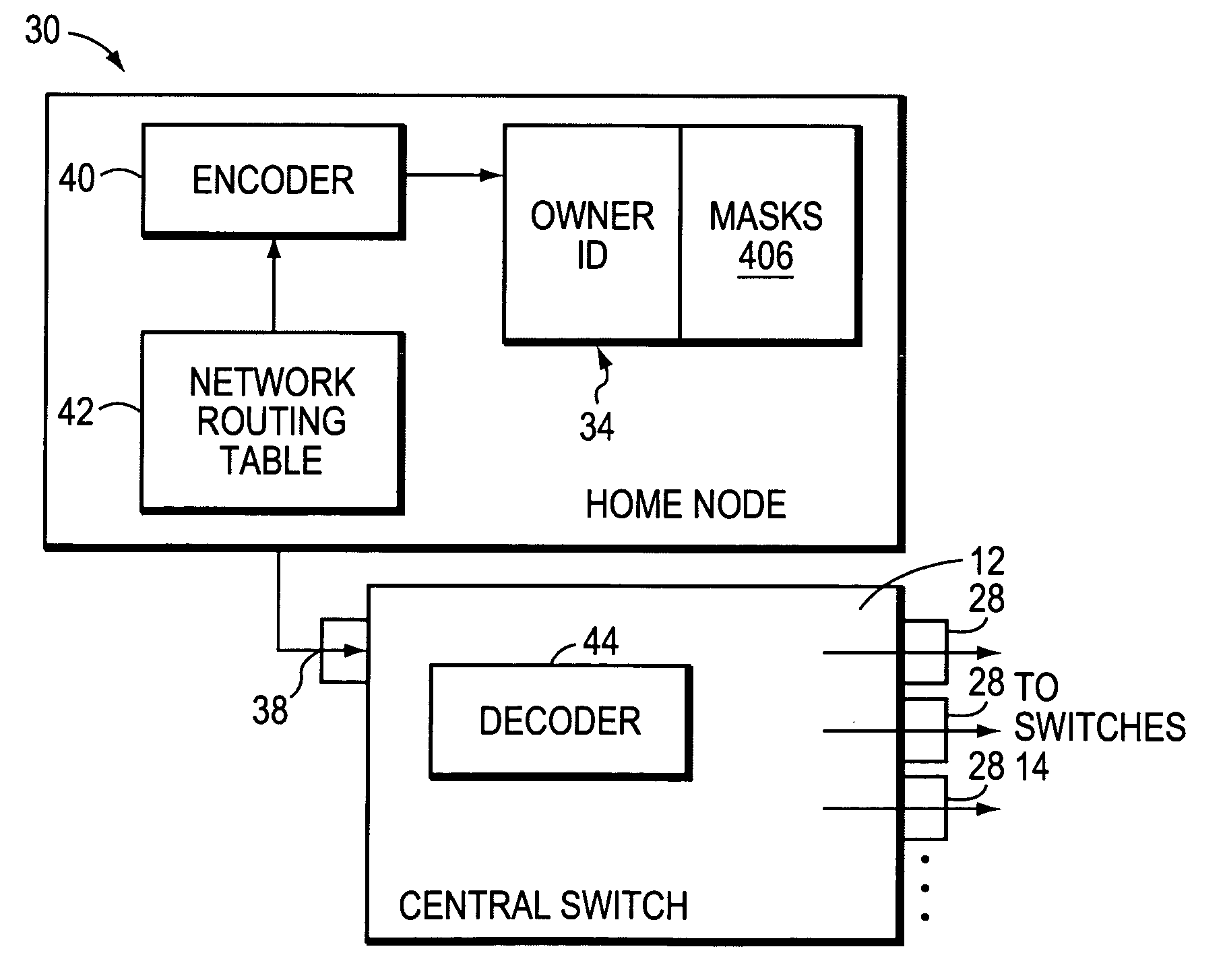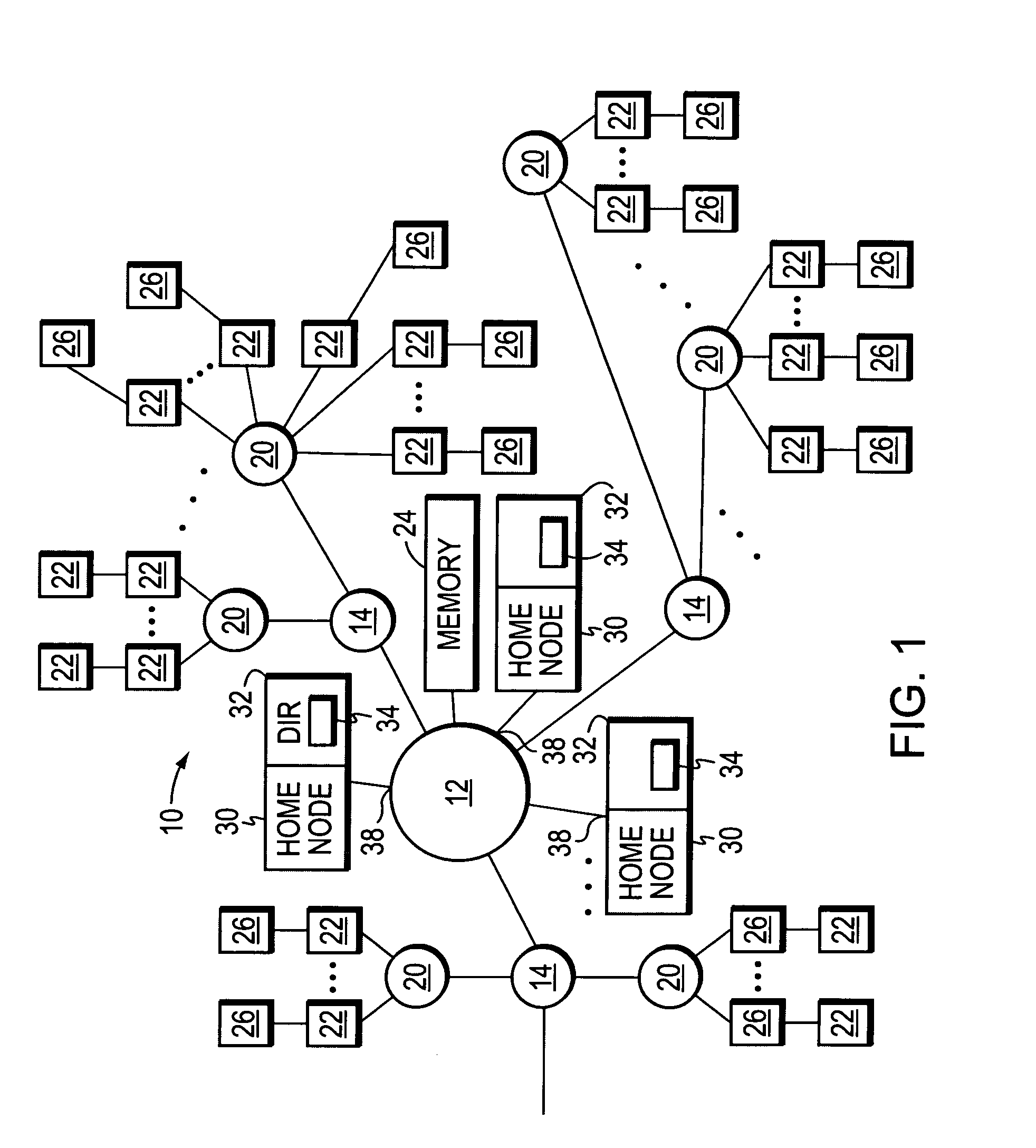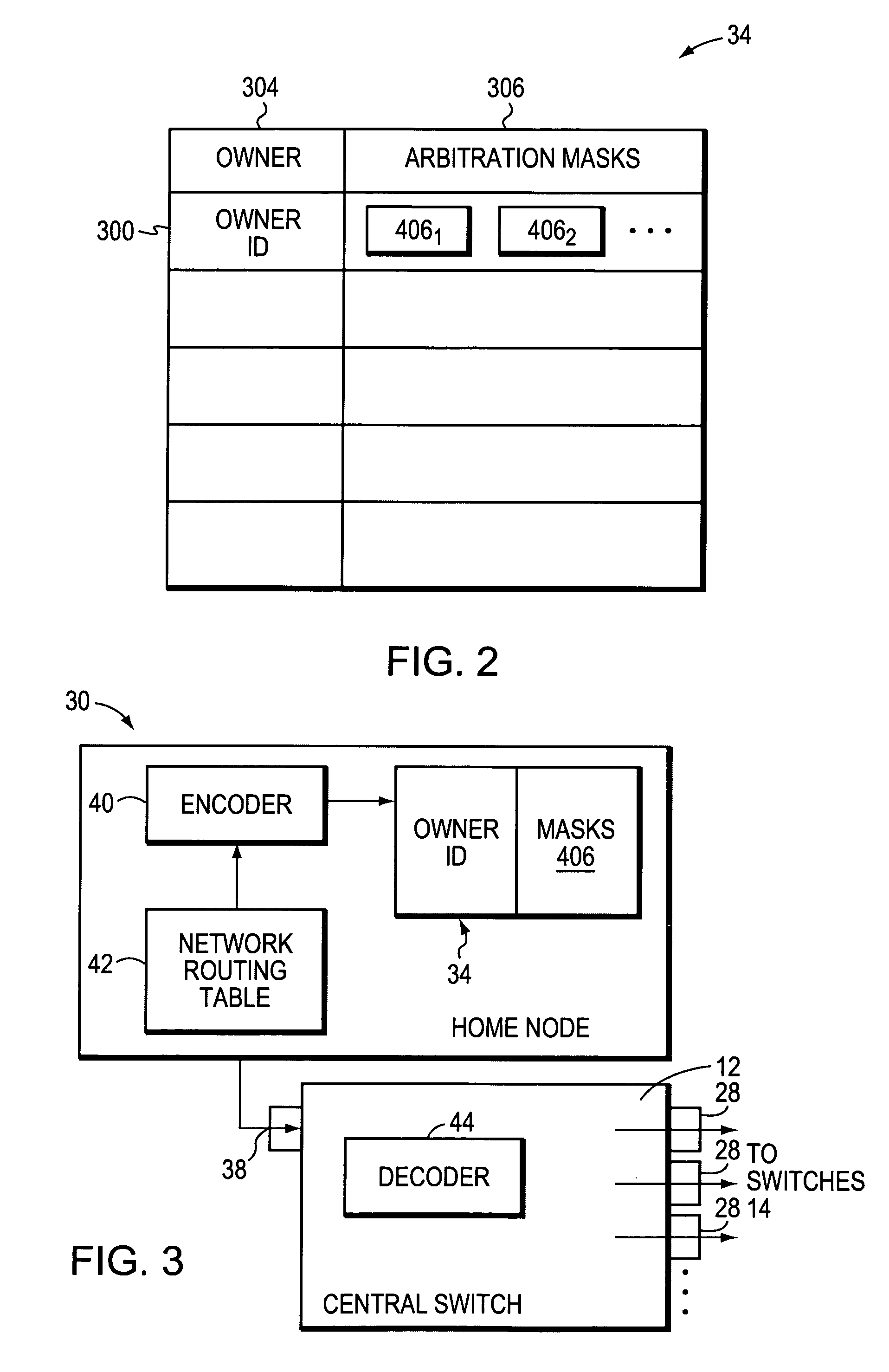Cache coherency mechanism using arbitration masks
a coherency mechanism and cache technology, applied in the direction of memory address/allocation/relocation, digital computers, instruments, etc., can solve the problems of invalid copying of data in the cache of other processors, invalid copying of data by one or more processors in processing operations, and affecting the speed of data processing, so as to reduce storage requirements, increase message traffic, and save storage space
- Summary
- Abstract
- Description
- Claims
- Application Information
AI Technical Summary
Benefits of technology
Problems solved by technology
Method used
Image
Examples
Embodiment Construction
[0028]Referring to FIG. 1, a plurality of processors 22 in a distributed shared memory system communicate over a network 10 that includes a central switch 12, intermediate switches 14 and group switches 20. The processors also share access to a main memory 24 over the network 10.
[0029]The system is directory-based and includes for each region of memory an associated “home node,” or processor, 30 that maintains system directories 32 for the region. Each home node communicates with the processors 22 through an associated port 38 of one of the switches 12, 14 or 20. The port 38 is hereinafter referred to as a “home port.” For ease of understanding the home nodes are depicted as connecting directly to the various central switches 12.
[0030]Each processor 22 controls an associated cache 26. In the drawing the processors access their caches directly. Alternatively, the processors may access their respective caches through the group switches 20. A given processor holds in its cache copies o...
PUM
 Login to View More
Login to View More Abstract
Description
Claims
Application Information
 Login to View More
Login to View More - R&D
- Intellectual Property
- Life Sciences
- Materials
- Tech Scout
- Unparalleled Data Quality
- Higher Quality Content
- 60% Fewer Hallucinations
Browse by: Latest US Patents, China's latest patents, Technical Efficacy Thesaurus, Application Domain, Technology Topic, Popular Technical Reports.
© 2025 PatSnap. All rights reserved.Legal|Privacy policy|Modern Slavery Act Transparency Statement|Sitemap|About US| Contact US: help@patsnap.com



